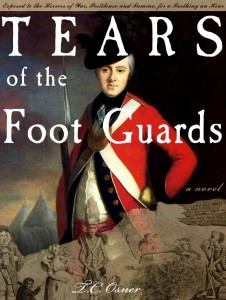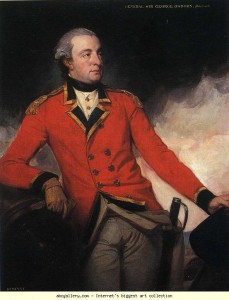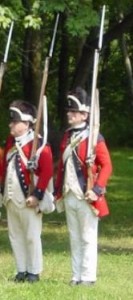 Welcome to my blog! The week of 2 July – 9 July, I’m participating with more than one hundred other bloggers in the “Freedom to Read” giveaway hop, accessed by clicking on the logo at the left. All blogs listed in this hop offer book-related giveaways, and we’re all linked, so you can easily hop from one giveaway to another. But here on my blog, I’m posting a week of Relevant History essays, each one focused on some facet of the American War of Independence. To find out how to qualify for the giveaways on my blog, read through each day’s Relevant History post below and follow the directions. Then click on the Freedom Hop logo so you can move along to another blog. Enjoy!
Welcome to my blog! The week of 2 July – 9 July, I’m participating with more than one hundred other bloggers in the “Freedom to Read” giveaway hop, accessed by clicking on the logo at the left. All blogs listed in this hop offer book-related giveaways, and we’re all linked, so you can easily hop from one giveaway to another. But here on my blog, I’m posting a week of Relevant History essays, each one focused on some facet of the American War of Independence. To find out how to qualify for the giveaways on my blog, read through each day’s Relevant History post below and follow the directions. Then click on the Freedom Hop logo so you can move along to another blog. Enjoy!
 Relevant History welcomes Tim Osner, who lives in Melvin Village, NH and has been a finalist in 2011 in the Faulkner/Wisdom Literary Competition for his novel, Tears of the Foot Guards and as a short-list finalist in 2005 for his novel, Miles Christi. Tim is the principle partner in a healthcare consulting firm. He has also been a commercial photographer in Chicago, specializing in large locations shooting for ad agencies and corporations. An ardent student of history, Tim has been a Revolutionary War re-enactor since 1984 in the re-created grenadier company of the Brigade of Guards on American Service. Look for him on Redroom. He may be contacted at tim.osner (at) tcosner (dot) com.
Relevant History welcomes Tim Osner, who lives in Melvin Village, NH and has been a finalist in 2011 in the Faulkner/Wisdom Literary Competition for his novel, Tears of the Foot Guards and as a short-list finalist in 2005 for his novel, Miles Christi. Tim is the principle partner in a healthcare consulting firm. He has also been a commercial photographer in Chicago, specializing in large locations shooting for ad agencies and corporations. An ardent student of history, Tim has been a Revolutionary War re-enactor since 1984 in the re-created grenadier company of the Brigade of Guards on American Service. Look for him on Redroom. He may be contacted at tim.osner (at) tcosner (dot) com.
*****
WERE I, like N I O B E, all tears – I’d weep,
And swell the Water of the mighty Deep:
If chang’d like A R E T H U S A to a Stream,
In Tears I’d flow – and Beauty make my Theme.
Curse the Madness of the Times – and those
Who made America our fellest Foes! . . .
So begins the satirical poem, “Tears of the Foot Guards”, published in 1776 by an “Ensign of the Army,” accusing the Guards of puppyism and cowardice upon their departure for the American war.
 What shall I write here about the Guards during the American Revolution? It took me nearly twenty years and many hundreds of pages for the novel that is to come out in 2015. Twenty years, I admit it—writing and rewriting, and just when I thought I was finished, I’d discover something new, and though I love the history, my task was first and foremost to tell a story.
What shall I write here about the Guards during the American Revolution? It took me nearly twenty years and many hundreds of pages for the novel that is to come out in 2015. Twenty years, I admit it—writing and rewriting, and just when I thought I was finished, I’d discover something new, and though I love the history, my task was first and foremost to tell a story.
As to the poem’s veracity, one needs only to examine the Guards’ service to see that it is patently untrue. The American actions stack up to any in their celebrated history.
 When the call went out among the three regiments for volunteers to form the brigade, so many petitioned that a draft was held, and fifteen privates were picked from each of the Guards’ companies to form the composite brigade of one thousand officers and men for America Service. I could talk about their campaign uniform derived from lessons learned in the French & Indian War. How they were veterans all; in the grenadier company the average age was thirty-four with fourteen years experience. They practiced marksmanship in preparation for battle. They engaged in light infantry maneuvers to fight on broken ground. Their officers, privileged sons, were often scrappers; Capt. Watson and Lt. Col. Hyde of the 3rd and 1st Guards engaged in an impromptu duel over an old house both their companies had earmarked to demolish for firewood while occupying Philadelphia (Lt. Col. Hyde received a stab wound in his arm). On another occasion, Coldstream ensign, George Eld, made quick work of a bullying Highland officer late one night in a crowded New York coffee house. Theirs was a great pride and élan. When Lord Percy found the Guards had been assigned to his division at the Battle of Brooklyn, in a letter home, he nearly gushed over them—what splendid fellows they are. Cock-of-the-Walk. They were hard fought and in the thick of many actions. If the war had been won, what additional honors would adorn their Regimental Colours.
When the call went out among the three regiments for volunteers to form the brigade, so many petitioned that a draft was held, and fifteen privates were picked from each of the Guards’ companies to form the composite brigade of one thousand officers and men for America Service. I could talk about their campaign uniform derived from lessons learned in the French & Indian War. How they were veterans all; in the grenadier company the average age was thirty-four with fourteen years experience. They practiced marksmanship in preparation for battle. They engaged in light infantry maneuvers to fight on broken ground. Their officers, privileged sons, were often scrappers; Capt. Watson and Lt. Col. Hyde of the 3rd and 1st Guards engaged in an impromptu duel over an old house both their companies had earmarked to demolish for firewood while occupying Philadelphia (Lt. Col. Hyde received a stab wound in his arm). On another occasion, Coldstream ensign, George Eld, made quick work of a bullying Highland officer late one night in a crowded New York coffee house. Theirs was a great pride and élan. When Lord Percy found the Guards had been assigned to his division at the Battle of Brooklyn, in a letter home, he nearly gushed over them—what splendid fellows they are. Cock-of-the-Walk. They were hard fought and in the thick of many actions. If the war had been won, what additional honors would adorn their Regimental Colours.
When I think about the Guards on American Service, what is most striking is that these were soldiers who wanted to fight this war, who believed they were preserving liberties derived from a constitutional monarchy. To them, the enemy was rabble faction hijacking the rule of law and threatening loyal citizens. They, as other British regiments, were in a hostile country thousands of miles from home. To many, it was the other side of the world. And towards the end, they found themselves embroiled in a savage civil war. “The violence and passions of these people are beyond every curb of religion, & Humanity…violences of every kind, unheard of before…” (Charles O’Hara, Coldstream Guards, January 6, 1781.)
 Of the actions the Guards are known for during the Revolution, most notably Guildford Court House and the Catawba Crossing, the one that stands out to me is the nighttime sortie at Yorktown. Cornwallis’ army was surrounded without hope. The Americans and the French had taken redoubts #9 and #10 the night before, allowing the allies’ batteries to come within 300 yards. A forlorn hope was ordered to spike the allies’ guns to buy time for escape and, in the event of surrender, buy the honors of war.
Of the actions the Guards are known for during the Revolution, most notably Guildford Court House and the Catawba Crossing, the one that stands out to me is the nighttime sortie at Yorktown. Cornwallis’ army was surrounded without hope. The Americans and the French had taken redoubts #9 and #10 the night before, allowing the allies’ batteries to come within 300 yards. A forlorn hope was ordered to spike the allies’ guns to buy time for escape and, in the event of surrender, buy the honors of war.
At 4:00 a.m. a sortie composed the Light Infantry, the grenadier company of the 80th Foot, and the grenadier company of the Guards moved out the Hornwork, silent with bayonets fixed and flints pulled. They crossed the scarred no-mans land of three hundred yards and entered the gap between the French and American batteries. A quick and vicious fight occurred, the British spiking the guns with the tip of their bayonets as they had no spiking nails. They tumbled back as French troops began to overwhelm them. As the British retreated, a lone Guards grenadier sergeant stood on the parapet fighting off the French hand-to-hand so the party could escape. His was struck twelve times before he went down.
After the surrender, Samuel Graham of the 76th Foot was allowed to visit the Allied works. French officers showed him the sergeant’s grave whom they had buried with full honors, saying, “Voila un de vos braves gens.”
I think about soldiers. Then and now. Thinking they’re not much different—ordinary men far from home and transformed by horrific situations. I was reading T. E. Lawrence’s Seven Pillars of Wisdom, and in the opening chapter he said of war: “We lived always in the stretch or sag of nerves, either on the crest or in a trough of waves of feeling.” So I guess of Revolutionary soldiers. I guess it of the Guards. My hope is that I’ve given them a good story.
*****
A big thanks to Tim Oster. Anyone who comments on this post by 6 p.m. ET on Monday 7 July will be entered in a drawing to win a copy of one of my five books, the winner’s choice of title and format (trade paperback or ebook).
**********
Did you like what you read? Learn about downloads, discounts, and special offers from Relevant History authors and Suzanne Adair. Subscribe to Suzanne’s free newsletter.

